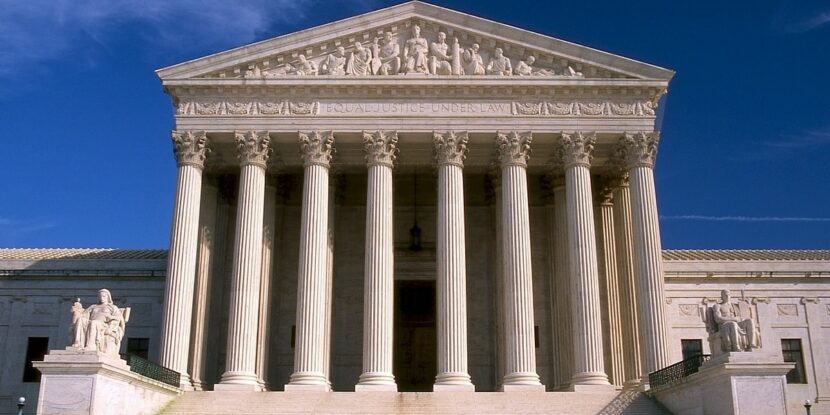The Supreme Courthanded down two 5-4 decisions on Thursday that had each wing of the courtaccusing the other of doing something unprecedented.
Census Citizenship Question
The first case, Department of Commerce v. New York, dealt with the challenges from liberals over the Trump administration’s plans to ask respondents to the 2020 census whether or not they are citizens. The question they want to add is simply, “Is this person a citizen of the United States?” The question was part of every census from 1790 until 1950, when the government changed the way it conducted the census survey.
The administration says the question will allow them to gather more accurate data on where voters are in order to better enforce the Voting Rights Act. Conservatives also say that it shouldn’t be controversial for the country to get basic data about how many citizens live here. Leftists claim that adding the question will strike fear into immigrants who are afraid of deportation, reducing response rates and thus the number of U.S. House seats and electoral votes apportioned to immigrant-heavy states. Conservatives counter that there is no evidence that the question would depress response rates and that even if it did, it would hurt immigrant-heavy red states like Texas and Arizona just as much as blue states like California and New York.
In a confusing decision, Chief Justice John Roberts sided with the court’s four leftists to put the question on hold pending more information. Roberts, writing for the majority, said that the administration has the constitutional authority to ask about citizenship on the census questionnaire and even that the decision to re-add the question was reasonable. But he also said the administration’s explanation for adding the question was inadequate. Roberts concluded:
The reasoned explanation requirement of administrative law, after all, is meant to ensure that agencies offer genuine justifications for important decisions, reasons that can be scrutinized by courts and the interested public. Accepting contrived reasons would defeat the purpose of the enterprise. If judicial review is to be more than an empty ritual, it must demand something better than the explanation offered for the action taken in this case.
The majority sent thecase back down to a lower court and asked the administration for a betterexplanation.
The four conservativejustices joined the first part of Roberts’ majority opinion that theadministration has the right to ask the question, but they ripped the secondpart. Justice Clarence Thomas blasted the majority opinion in his dissent,saying, “For the first time ever, the Court invalidates an agency action solelybecause it questions the sincerity of the agency’s otherwise adequaterationale.” Justice Samuel Alito agreed, saying, “To put the point bluntly, theFederal Judiciary has no authority to stick its nose into the question [of]whether it is good policy to include a citizenship question on the census orwhether the reasons given by Secretary Ross for that decision were his onlyreasons or his real reasons.”
The next steps are unclear. Some administration officials previously said that the case needed to be resolved by June in order to move forward with the citizenship question, while others said a resolution was needed by the fall. If the administration wants to keep contesting the issue, it could reach the Supreme Court again in the coming months but would need a quick decision.
Gerrymandering
The second case dealtwith partisan gerrymandering. This time Roberts sided with the four conservativesin a 5-4 majority decision that said federal judges have no power to intervenein gerrymandering disputes and that the solutions are up to Congress, thestates, and the people.
At issue were two lawsuits combined into one case. Maryland Republicans sued over Democrat legislators’ 2010 redraw of the previously GOP-leaning 6th District in rural western Maryland to stretch to include a chunk of the deep-blue D.C. suburbs. Prior to the redraw, Republican Roscoe Bartlett won the district 61 percent to 33 percent in 2010. However, when the new map took effect in 2012, Bartlett lost to Democrat John Delaney 59 percent to 38 percent.
At the same time, North Carolina Democrats also sued over Republican legislators’ 2010 redraw of all the state’s districts, which they contend turned the state’s districts from evenly split to favorable to Republicans. The worst example presented was the 12th District, which shimmies in a thin line from Greensboro down to Charlotte.
Roberts wrote themajority opinion again, saying, “We conclude that partisan gerrymanderingclaims present political questions beyond the reach of the federal courts.Federal judges have no license to reallocate political power between the twomajor political parties, with no plausible grant of authority in theConstitution, and no legal standards to limit and direct their decisions.”
The majority opinion concluded that there are a number of ways to end gerrymandering, including means enacted by a number of states to require districts to be drawn by independent commissions. Roberts said, “We express no view on any of these pending proposals. We simply note that the avenue for reform established by the Framers, and used by Congress in the past, remains open.”
Justice Elena Kaganwrote the dissent for the four leftists and read parts of it from the bench,something justices typically only do when they feel strongly about a case.Kagan threw the “for the first time” line back at the conservatives, saying,“For the first time in this Nation’s history, the majority declares that it cando nothing about an acknowledged constitutional violation because it hassearched high and low and cannot find a workable legal standard to apply.”
In a rare move for the modern court, the majority chose not to grab power from Congress or the states. Roberts invoked Marbury v. Madison’s pronouncement that, “It is emphatically the province and duty of the judicial department to say what the law is,” and concluded, “In this rare circumstance, that means our duty is to say ‘this is not law.’”


